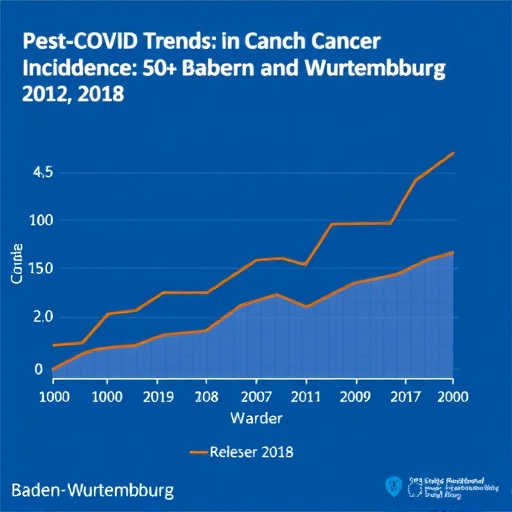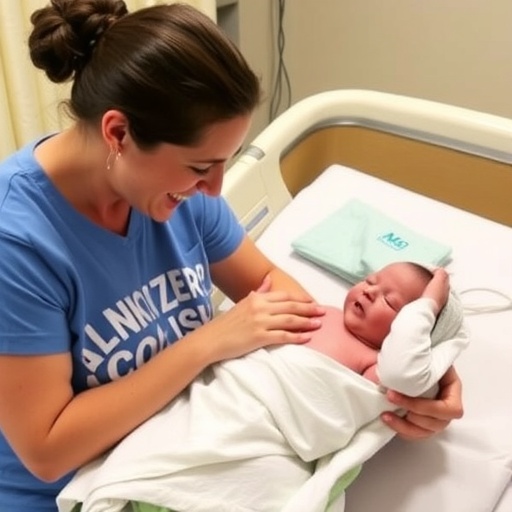
In a groundbreaking multi-center retrospective study published in BMC Cancer, researchers have shed new light on the role of ovarian function suppression (OFS) in improving disease outcomes for premenopausal women diagnosed with hormone receptor-positive (HR+) and HER2-positive (HER2+) early-stage breast cancer. This investigation, encompassing a substantial cohort of 1,338 patients, reveals compelling evidence supporting the addition of OFS to standard adjuvant endocrine therapies, particularly in those treated with trastuzumab.
The management of HR+/HER2+ breast cancer, especially in younger premenopausal patients, continues to challenge oncologists due to its complex biology and heterogeneous response to therapy. While trastuzumab remains a cornerstone in treating HER2-positive disease, the optimal endocrine therapeutic strategy in conjunction with ovarian suppression has remained elusive. This study addresses this critical knowledge gap by evaluating the prognostic impact of OFS in combination with selective estrogen receptor modulators (SERMs) or aromatase inhibitors (AIs), contextualizing its value in contemporary treatment paradigms.
Researchers deployed robust statistical methodologies, including Kaplan-Meier survival analyses and Cox proportional hazards modeling, to decipher the influence of OFS on disease-free survival (DFS). Stratifying patients based on their adjuvant endocrine therapy regimens, the team meticulously compared outcomes between those receiving SERM or AI alone and those treated with SERM/AI plus OFS, revealing a statistically significant survival advantage favoring the latter group.
.adsslot_2MF4ugSZzk{width:728px !important;height:90px !important;}
@media(max-width:1199px){ .adsslot_2MF4ugSZzk{width:468px !important;height:60px !important;}
}
@media(max-width:767px){ .adsslot_2MF4ugSZzk{width:320px !important;height:50px !important;}
}
ADVERTISEMENT
The findings demonstrated that the incorporation of OFS into endocrine therapy nearly halved the risk of disease recurrence, with a hazard ratio of 0.496 (95% CI: 0.307–0.803, p = 0.004). Such a pronounced reduction in relapse risk affirms OFS as an independent prognostic factor in this subset of breast cancer patients, underscoring its potential to substantially modify disease trajectory when combined with trastuzumab.
Importantly, the study’s subgroup analyses provide pivotal insights into patient stratification, revealing that the benefits of OFS are particularly pronounced among those with higher-risk tumor characteristics. Premenopausal patients exhibiting estrogen receptor (ER) expression levels below 50%, high histological grade (grade 3 tumors), tumor sizes exceeding 2 cm, or regional lymph node positivity derived considerable survival benefit from the addition of OFS, guiding clinicians toward a more tailored treatment approach.
Age-related factors also influenced OFS utilization, with younger patients under 35 years more likely to receive ovarian suppression alongside their endocrine therapy. This observation aligns with clinical intuitions regarding the aggressive nature of breast cancer in younger cohorts and the desire to optimize hormonal deprivation strategies to mitigate recurrence risk effectively.
These findings hold significant implications for clinical practice, especially given the nuanced interplay between endocrine therapy and HER2-targeted treatments like trastuzumab. By integrating ovarian suppression, oncologists may offer premenopausal patients a more comprehensive blockade of estrogenic stimulation, potentially curbing the proliferative signals that fuel HR+ tumor growth in the context of HER2 signaling.
Moreover, the study’s extensive dataset drawn from multiple high-volume cancer centers enhances the generalizability of the conclusions, reflecting real-world treatment patterns and outcomes. Such breadth lends credence to the adoption of OFS as a standard adjunct in managing HR+/HER2+ early-stage breast cancer among the premenopausal population.
Crucially, this research bridges a pivotal clinical knowledge gap, as previous investigations have often focused on postmenopausal patients or lacked stratification by HER2 status. By centering on premenopausal women with HER2-positive disease, these insights align with the evolving paradigm of precision oncology and patient-specific treatment regimens.
From a mechanistic standpoint, ovarian suppression reduces systemic estrogen levels, thereby minimizing ligand availability for hormone receptors that drive tumor proliferation. This effect is synergistic with HER2 inhibition, which disrupts alternate growth and survival pathways, collectively enhancing tumor control.
Nevertheless, the decision to implement OFS must weigh potential side effects, including menopausal symptoms, bone density loss, and impacts on fertility, underscoring the need for multidisciplinary counseling and patient-centered decision making. Future studies could build upon this work by prospectively evaluating quality of life and long-term toxicities associated with extended OFS use.
The researchers also identified key clinical factors influencing the likelihood of OFS administration, such as higher nodal involvement and aggressive tumor features, suggesting that oncologists are already judiciously selecting patients who stand to gain the most from ovarian suppression. These patterns reinforce the principle of risk-adapted treatment intensification within breast oncology.
In conclusion, this comprehensive study confirms that adding ovarian function suppression to adjuvant endocrine therapy significantly enhances disease-free survival in premenopausal patients with HR+/HER2+ early-stage breast cancer treated with trastuzumab. Such evidence substantiates OFS as a critical component in optimizing therapeutic strategies and improving patient prognosis.
As breast cancer management continues to evolve, integrating hormonal manipulation with targeted therapies promises to refine outcomes further. This research not only provides a roadmap for clinicians but also calls for ongoing investigation into balancing efficacy with quality of life in vulnerable premenopausal populations.
By illuminating the prognostic significance of OFS, the study advances the frontier of breast cancer therapy and emphasizes the need for personalized approaches that encompass tumor biology, patient age, and individual risk profiles. As oncologic paradigms increasingly emphasize precision, these findings mark a significant milestone in devising optimal treatments for younger women facing HR+/HER2+ breast cancer.
Future research directions might include randomized controlled trials to corroborate these retrospective findings, investigations into genomic predictors of OFS benefit, and strategies to mitigate adverse effects associated with ovarian suppression, thereby maximizing both efficacy and tolerability.
Ultimately, the integration of ovarian function suppression into the therapeutic armamentarium represents a beacon of hope for improving long-term outcomes among premenopausal women challenged by this biologically aggressive breast cancer subtype.
Subject of Research: Impact of ovarian function suppression on prognosis in premenopausal patients with hormone receptor-positive (HR+)/HER2-positive early-stage breast cancer treated with trastuzumab.
Article Title: Impact of ovarian function suppression on prognosis in premenopausal patients with HR+/HER2 + early-stage breast cancer: a multi-center retrospective study.
Article References:
Lian, W., Li, L., Hong, C. et al. Impact of ovarian function suppression on prognosis in premenopausal patients with HR+/HER2 + early-stage breast cancer: a multi-center retrospective study. BMC Cancer 25, 1331 (2025). https://doi.org/10.1186/s12885-025-14774-w
Image Credits: Scienmag.com
DOI: https://doi.org/10.1186/s12885-025-14774-w
Tags: adjuvant endocrine therapy strategiesaromatase inhibitors effectivenessdisease-free survival analysisHR+ HER2+ breast cancer outcomesimproving treatment paradigms in oncologymulti-center retrospective study findingsovarian function suppression benefitspremenopausal breast cancer treatmentprognostic impact of ovarian suppressionselective estrogen receptor modulators rolestatistical methodologies in cancer researchtrastuzumab in breast cancer





